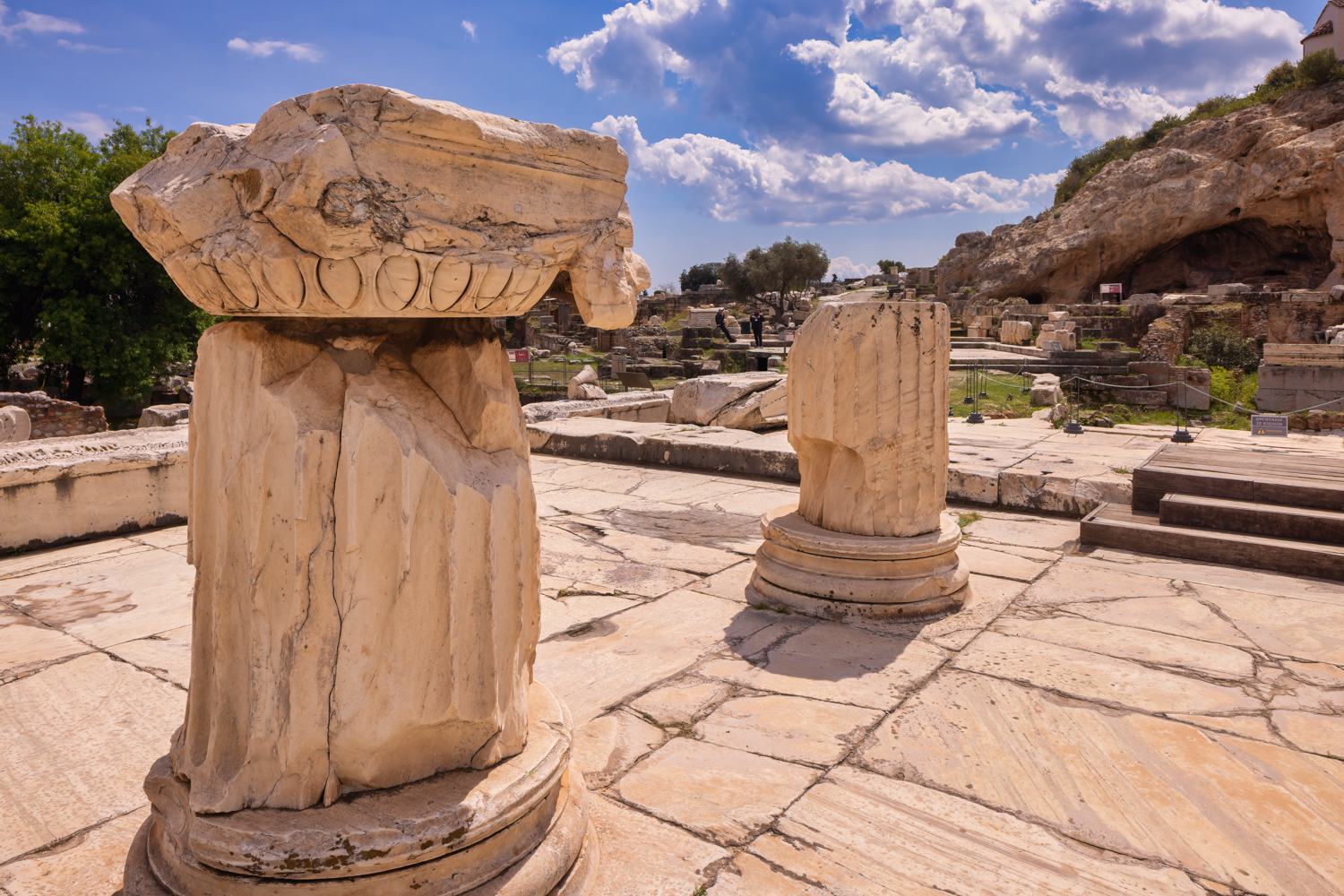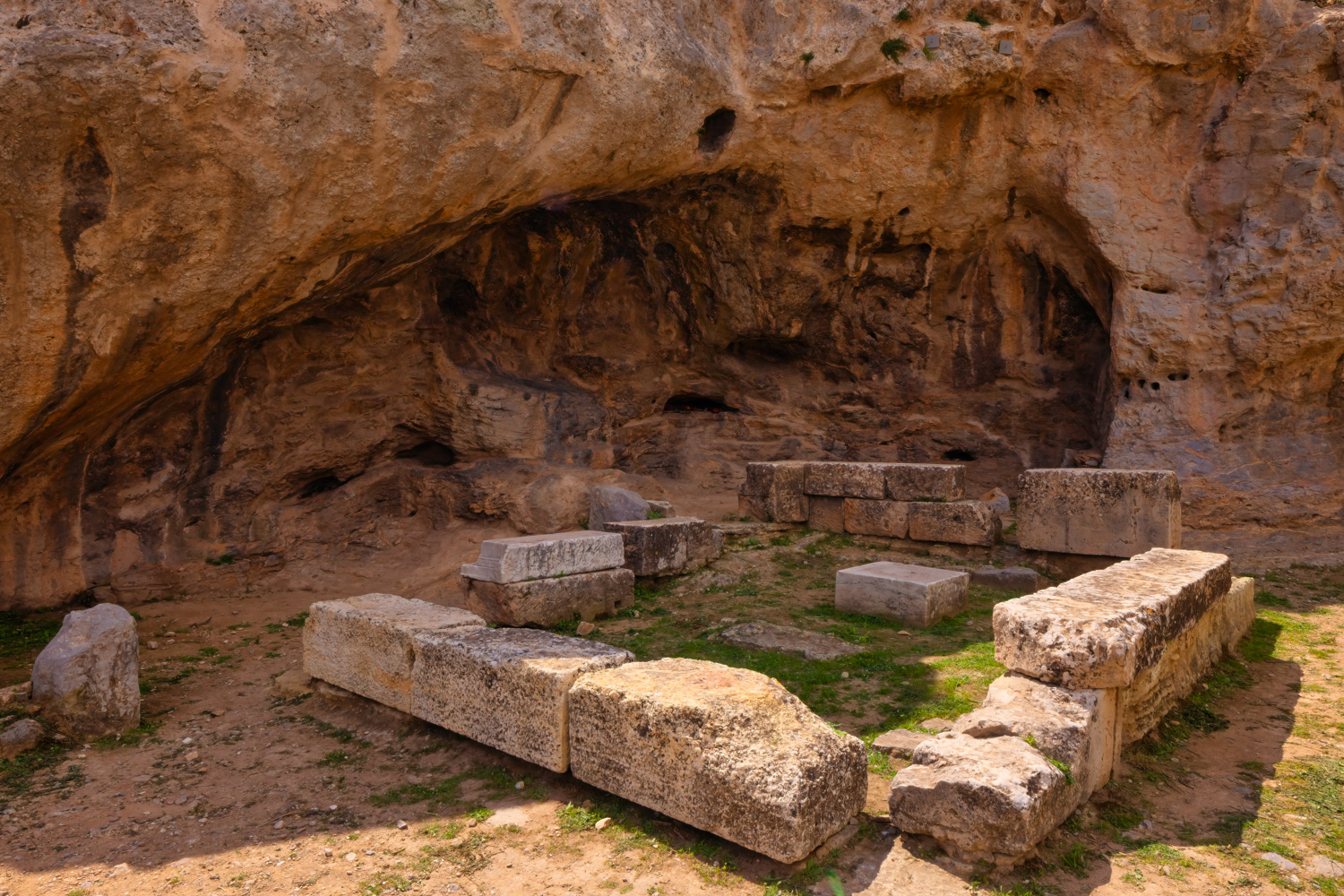
350-300 BCE
15.97mm 3.37g
Obverse: Triptolemos in winged car drawn by serpents left
Reverse: Eleusi, pig standing right on mystic staff, bucranium below
SNG Copenhagen 315
Ex Glenn Woods
Perhaps the most jarring thing about the Eleusinian Mysteries is that we weren’t invited. Within all of the literature that has passed down to us, none tell us specifically what went on there. Some authors, such as Aristophanes, were chastised for revealing too much of the mysteries in their works, but even then we’re clueless on specifically what they revealed.
We do know a pig was involved. Before you get jealous, the piglet had to be sacrificed by all new initiates. Triptolemos, who learned agriculture from Demeter, was also a major part of the mysteries. Supposedly, he was the first to learn them, and so he’s depicted on the coins for the festival.
On this coin Triptolemos is riding a seat carried by snakes. Sadly, they’re not visible on my coin as I had to choose between a well-centered and muscular Triptolemos and the snakes. These issues are horribly mis-centered and almost all worn. This one, though, has nice centering – just no snakes. Personally, I’d be freaked out by snakes strong enough to drive something. I do wonder though how they kept all the snakes going in the right direction.
This coin was used in those mysteries, though we’re not sure exactly how it figured. We do know there was a massive festival, where people came from all over Greece. Perhaps they had to exchange their currency to this one, which was a universal coinage only for festival use – and provided some profit to the organizers? Or were these coins of some use in the mysteries themselves? These questions too remain mysteries.
However, initiation into the Mysteries was a major thing back then. Everyone and anyone had to be there. One of the most famous initiates was Demetrios I Poliorketes, who in 302 BCE demanded they changed the rules in his favor to go through all three stages at once, since he was a busy guy besieging various cities.
I must admit Eleusis confuses me. Oh, I perfectly understand the “mystery” of it and even read an entire book on the site. No, what gets me is how to pronounce the town. Per the Greek pronunciation, it should be Elefsis or Elefsina – per the signs to get there. Then there’s the English pronunciation of e-lew-sis. Which is correct?
Whenever I asked a Greek, they said e-lew-sis. Whenever I asked an English speaker who also knew Greek – it was Elefsina. My suspicion is the actual Greek pronunciation IS elefsina, but in English it’s e-lew-sis, but I’m no expert.
Eleusis was a major stop on my “tour of antiquity” in Greece because I could literally walk along the path that so many famed ancients took, or at least I thought so. I later learned that the path I took on the site was created much later – during Roman times – and during the time of Demetrios Poliorketes it was different.
Nevertheless, this was one of the main places to be back then, and it was fascinating to see even the tough ruins that remain.
Here are a few photos from the stop.

